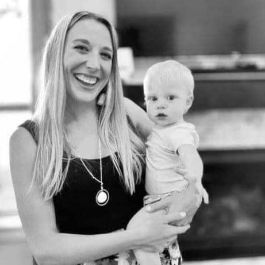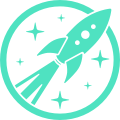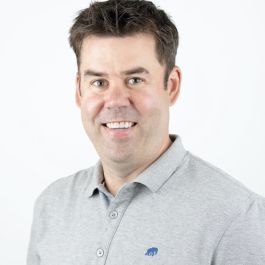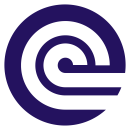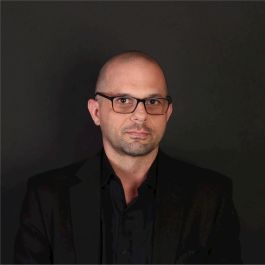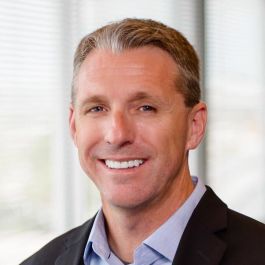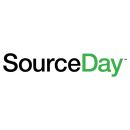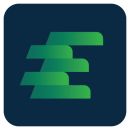With Q4 on the horizon, companies across Austin are gearing up to finish the year on strong footing. For these nine organizations, part of that strategy involves expanding their engineering teams to keep pace with growth.
To learn more about each company’s tech stack, upcoming projects and unique culture, we met with seasoned members of their engineering teams. If you’re scoping out new opportunities for fall and beyond, one of their open roles may be for you.
Their tech stack: “We are using Node, TypeScript and React for the front end, and Node, TypeScript and postgreSQL for the back end,” Hohmann said. “My favorite tech tool that our team is using is actually our own open-source product, Prism. We use Prism to automatically mock an endpoint described in our OpenAPI spec that hasn’t actually been implemented yet. This allows our front end to be developed in parallel with our back end, which has boosted our productivity as a team. I think it’s really cool that we use our own products, and have actually implemented several bug fixes and features that we found while doing so.”
Balancing initiatives: “The back-end architecture I mentioned above is a new pattern we’ve recently implemented and have used for a few new services. However, there is a lot of existing functionality that is now considered tech debt. We are starting to plan out how to tackle that tech debt in a business-friendly way. It’s not feasible to halt new feature development while you pay down all that tech debt, so we are trying to find a way to marry our product roadmap with our tech debt roadmap so we can work toward our architectural aspirations.”
Equal playing field: “Something I love about our team is that title does not equal decision-making power. In engineering specifically, this means that anyone and everyone has a say in technical decisions. Anyone can propose an idea or solution. We utilize what we call Working Groups to work through the proposal and come to a decision. This involves gathering key stakeholders and any engineers who have experience in the topic being discussed, and meeting on some cadence (usually weekly) until the problem is resolved and a solution is implemented. Not all proposals require a Working Group, but the ones that have large, cross-cutting implications to our architecture benefit from them.”
Their tech stack: “We’re doing cool stuff with Ruby, JavaScript (React, Material UI) all within a handful of Docker containers,” Michael said. “Features are deployed to CircleCI where Git feature branches are built, deployed and tested. Testing is completed by means of automated testing (unit and integration) using both native testing libraries and Postman Runner. Documentation is served to both the public and our internal teams (OpenAPI spec). I’d say our team’s favorite tech tools are Docker (though a love-hate relationship), IntelliJ’s IDEA and CircleCI.”
Predicting the unpredictable: “Dealerware is working on our next exciting offering that involves predicting the seemingly unpredictable! This involves measuring quantities of widgets at specific times. We’re constantly surprised with the number of widgets we have at a specific time, so management is challenging. Demand for the widgets is based upon many arbitrary things that are nearly unpredictable; so, the challenge is predicting the widgets before... well... they’re predicted. It is one of the most chaotic, daring and stimulating projects that I’ve ever worked on, and the things I’m learning have already improved my coding skills.”
Delivering diversely: “We’re an entirely remote team; our employees are located across the Americas with vastly different languages, experience and backgrounds. Ultimately our differences help us come together and build and deliver a product that is thoughtful and well-rounded. Our team culture is really something special. We laugh together, we work together, and sometimes we struggle together – but at the end of the day, we deliver. I’ve been amazed to see the progress we’ve made, and I’m excited to see where we’re going!”
Their tech stack: “Our main web app is running ASP.NET MVC with SQL Server, with a front end primarily written in TypeScript and React,” Huck said. “We are currently upgrading this to ASP.NET Core and .NET 5. At the same time, we are transitioning to a microservices based architecture running in Kubernetes, along with an Istio service mesh. The microservices themselves are mostly .NET 5, and take advantage of various data stores, including DynamoDB, PostgreSQL, and Redis. We host all of our infrastructure in AWS and are big fans of immutable infrastructure and infrastructure-as-code using Terraform. We also use Jira to manage our backlogs, GitHub for source control, and Jenkins along with some GitHub actions for CI.”
From monoliths to microservices: “We are in the process of decomposing our monolith into various microservices. Along the way, our platform team has built lots of infrastructure and libraries to make this as smooth as possible. Our goal is to give each of our engineering teams the freedom to innovate within their own domain, with separation between services to limit the risk across the system.”
Learning together: “Our core values at Rev are ‘serve, own and grow.’ I see this in action every day within our engineering team. We own the code we write and feel responsible to quickly address any issues that may arrive. A strong emphasis is put on personal growth; from the newest engineer to the most tenured, we all look for ways to learn from each other, give feedback and constantly improve.”
Their tech stack: “As a client tech services engineering team, we utilize the client’s tech stack,” Cocuzza said. “Most of their stacks involve a website built within a CMS with some integration with a CRM. There are eight different reference architectures in which we are currently working — either Sitcore, AEM, Contentful or WordPress integrating with either Salesforce Marketing Cloud, Marketo or Pardot. We have standardized our builds using infrastructure as code, automated deployments and front-end components that are tightly coupled with our UX team’s ‘wireframing’ process.”
Growing from within: “We’re currently working on an internal project for our own corporate website, which involves a complete rebranding, new name and CMS. It is built on the Contentful CMS with a React front end. This project had many stakeholders, a quick turnaround, amazing animations and a completely custom CMS, which will be managed by our marketing team and supported by our application management team.”
Gongs away: “Our team understands that every deployment is important. It is a way for our clients to share their stories with the world. To celebrate every successful deployment, we allow the project MVP to strike a gong. Whenever someone in the office hears a gong, they know we released an application on time, on budget and without critical errors. We are working on a virtual version of the gong.”
Their tech stack: “Our platform automates supply chain communication between buyers and suppliers while integrating with any of the major ERP systems commonly used in today’s market,” Feldman said. “With those integrations in mind, our engineering and support teams are armed with tools such as Ruby on Rails and RSpec, and are fluent in JavaScript, jQuery, and Elasticsearch. Our tech stack is also bolstered by a number of API integrations, including REST, SOAP, and XML. Lastly, our team leverages an Agile methodology in our tech development and implementation processes.”
Recent developments: “Recently, we’ve been investing more time and headcount into our AP automation tool. Our goal is to remove waste and mistakes from global supply chains by freeing teams from unorganized email messages and cumbersome spreadsheets. Our AP automation tool is built to achieve one outcome above all: help businesses make more money by giving them full control over all of their spend. Some of our earliest AP automation users have seen incredible results, including moving from almost a 100 percent paper-based process to nearly 97 percent paper-free. We’re thrilled to optimize and evolve our product to achieve even greater customer results.”
Agile success: “I cannot stress enough how game-changing Agile has been for this team in particular. I’ve witnessed greater accountability, productivity and overall technical success with the SourceDay team over the last two years. I believe a lot of that success can also be attributed to our larger company culture. Our leadership truly values each SourceDay employee, and has made it their mission to create a company that’s simply a great place to work. Rather than just talking about a great work culture, our CEO and our larger executive team transform talk into action, and make it come to life by supplying employees with the resources and support they need to constantly grow.”
Their tech stack: “We mostly use a Microsoft stack, with .NET Framework, MVC 5, and SQL Server,” Devlin said. “We use Azure Functions for asynchronous processing, whether that’s nightly processes or queue-based operations. One of the things I love about our platform is that we keep our architecture ridiculously simple. Everything is hosted with Azure’s PaaS offerings; scaling up is as easy as upgrading a pricing tier. This lets us avoid a lot of the headaches that come with container orchestration, and has led to better uptime (and fewer late nights).”
Going direct: “We are finishing a really ambitious project to build our own ACH processor. Instead of processing ACH transactions through a third party (e.g., Stripe), we have built a system to process these transactions ourselves. With our own ACH processor, we give ourselves the ability to resolve issues with the client directly. This presents new and exciting challenges, involving fraud detection and minimizing financial risks. We are also planning a project that will allow payers to break up large payments into monthly installments. It will be challenging to coordinate between the payer, the insurance agency, ePayPolicy, and a premium finance company, but will offer our customers a lot of value.”
Autonomy and stability: “We call ePayPolicy a ‘grown-up startup.’ We are a company of 50 employees and only four developers. This means that each developer has a huge impact on the technical decisions and overall direction of the product. Everyone enjoys a great deal of autonomy; there is no bureaucracy, red tape or committee approvals. But we are remarkably stable for a startup. We have been profitable for six years, and the platform is quite reliable. Employees enjoy big-company benefits like health insurance, dental, 401k and annual bonuses. Our team culture is also relaxed and friendly. We challenge each other’s ideas in a friendly, constructive way.”
Their tech stack: “While we use a lot of tools you’d expect (RxJava, Dagger, Mockito, etc.), I have come to love using Arrow,” Isturiz said. “There was a bit of a learning curve and I’m still understanding all it has to offer, but it comes in handy very often. For example, there’s a pain point in RxJava where it cannot emit a null value. Of course, there are always smart folks with smart solutions to that, but with Arrow’s Optional class, we don’t have to worry about that.”
Dreaming big: “We are focusing our efforts on hypertension. In most organizations, engineers aren’t involved so early in the process; that’s what makes One Drop special. I’ve gotten to participate in a lot of user research, which has given me a great perspective on how impactful our work is on peoples’ lives. I’ve been able to play a large role in deciding what it is we will build that will bring the largest benefit to our members.”
Bridging departments: “All opinions and ideas are valued. Because of that culture, we all have the opportunity to participate in areas that interest us, even if it falls outside of our ‘role.’ As long as you fulfill your responsibilities in the role you were hired for, you can really make an impact in any area. While I am a software engineer and my main focus is writing and reviewing code, I also have the opportunity to get involved with things like user research and dreaming up future features. Another engineering peer of mine loves good design, so they are highly involved with the design team and their inner workings.”
Their tech stack: “We have teams using different stacks, but most of them are Java- or JVM-based,” Neupane said. “Our web application is Spring Boot-based application with Angular JS front end and containerized using Docker, and runs on the AWS cloud. Back end developers love IntelliJ IDEA for the IDE, whereas VS Code is the favorite on the front end. Both front end and back end love Docker and Docker Compose for development and testing of the application that we have.”
Real-time wins: “My most interesting and challenging project right now is our new and free Liquibase Hub platform where Liquibase users can organize, monitor and visualize database change activity in real time. I love working with our team in order to make every aspect of our SaaS product better.”
Tight-knit team: “Liquibase promotes a very healthy culture. Everyone is super friendly and the company feels like a big family. Our team members are far from each other physically, but we still feel that closeness in the midst of everyone working remotely. This closeness brings love, empathy and mutual respect. We help each other to reach our common goals. The most unique thing about this team is how receptive we are to one another. Our team and higher management is always ready to bring change to processes and workflows to get rid of impediments.”
Their tech stack: “I’ve worked with React and React Native the most, and also have experience with C#, GraphQL and Node.js,” Tullos said. “My team is currently working with React Native and GraphQL on a new project. There’s always a cool new feature being added, and there’s always something to learn.”
My Health: “The project is designed to help our members improve their health based on their needs. It really feels like we are making an impact on our members with our code. I’m really happy to be able to create something that has the potential to help people across the world, and I’m grateful to have the opportunity to do so. I enjoy the learning process of this project as well, since we’re creating a micro front-end with React Native. I’ve never seen that done before until now, and I’m impressed with how well it is going.”
An encouraging environment: “My team is amazing! Everyone is kind and passionate about the work we do. It is such a supportive and comforting environment to be in. There is never a right or wrong question to ask, and all questions are welcomed. This is the best team I’ve ever worked with.”



